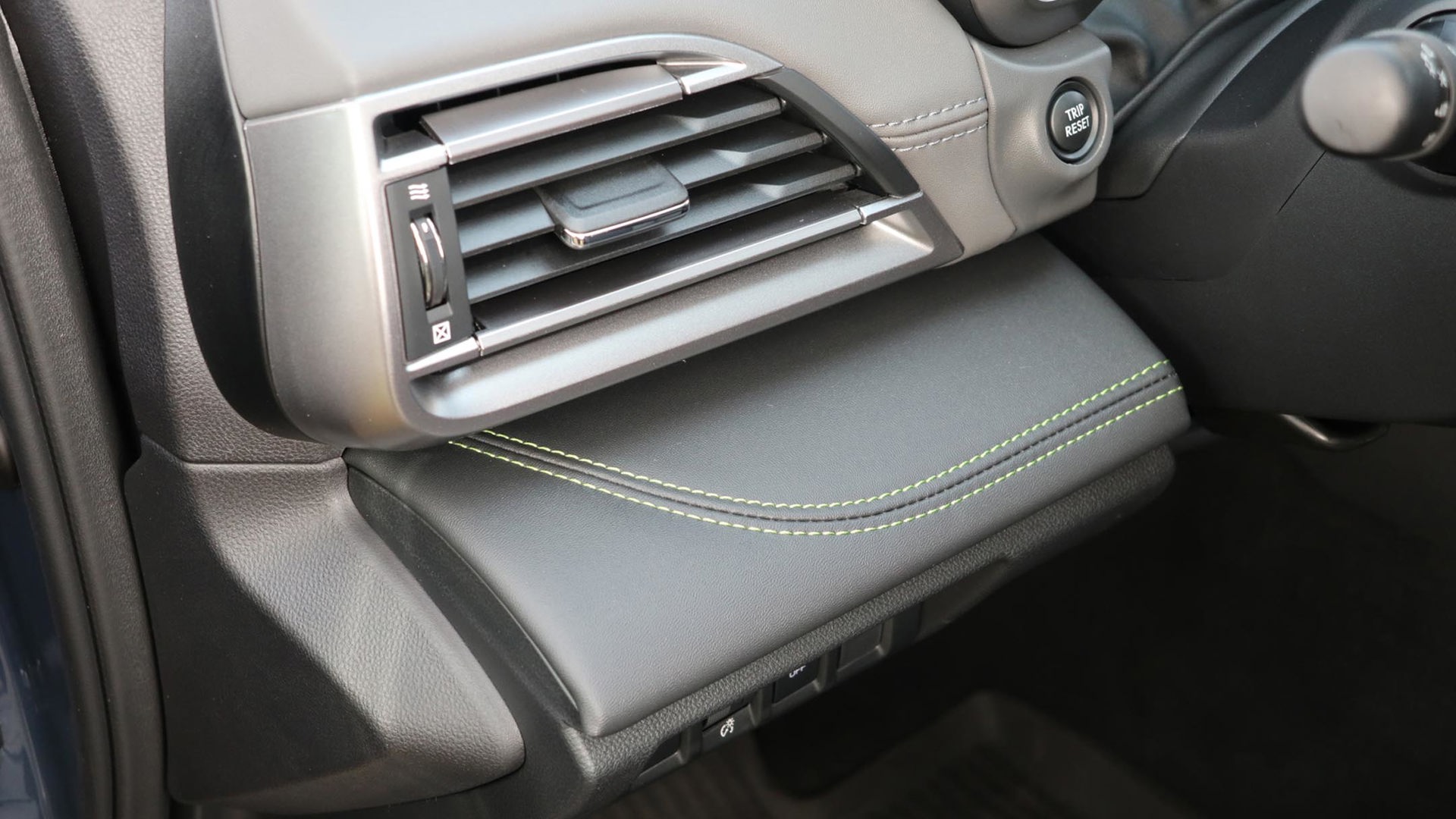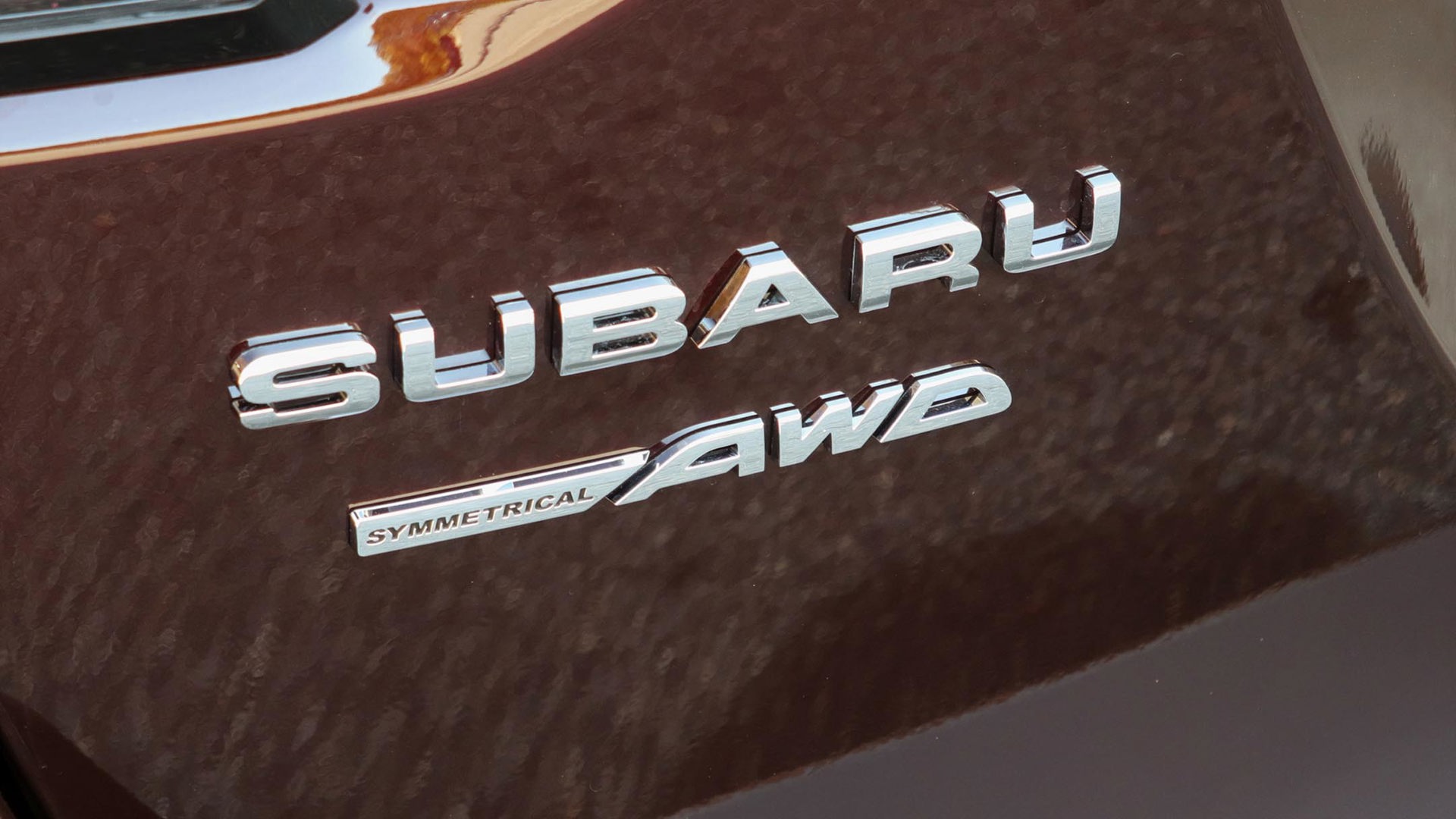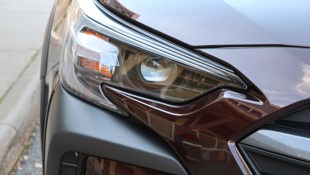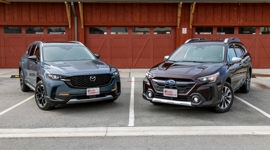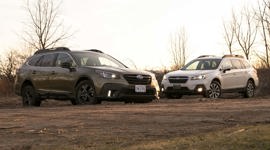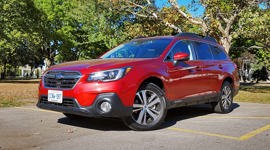The station wagon used to be the family hauler of choice, until the SUV showed up and changed people’s preferences. Subaru doesn’t actually call its Outback the W-word, preferring “SUV Alternative,” but a wagon like this by any other name still gets the job done very well. The automaker gave us a day’s drive in Muskoka, Ont., to see what the 2023 version is all about.
Remade into its sixth generation in 2020, the Outback receives a mid-cycle refresh for 2023, including updated exterior design, interior features and technology, improvements to its driver-assist safety features, and a new Onyx trim. The more rugged Wilderness trim was introduced for 2022 with unique design cues, so it receives the new technologies but not the styling changes.
The drivelines are unchanged, with two engines available. A non-turbo 2.5L four-cylinder is used in four trims, starting with the base Convenience trim at $34,690, including a non-negotiable delivery fee of $1,995, and goes to the Limited at $42,990. The new Onyx uses that non-turbo engine and is $40,690. Three trims use a turbocharged 2.4L four-cylinder: the Wilderness at $45,190; Limited XT at $45,990; and Premier XT at $48,390.
The design changes include a new grille, front and rear bumpers, LED headlights and fog lamps, and new side cladding. I like the new front face, and while the cladding looks a bit heavy to me, especially on the car’s corners, it ties in with Subaru’s marketing, which is for “people who are outdoorsy but don’t rough it,” as a brand rep put it. Inside, all trims get a heated steering wheel – now warmed all the way around, instead of just at nine-and-three as before – and LED cabin and cargo lights.
The new Onyx is a half-step between the regular trims and the Wilderness model. While both exclusively have two extra selectable drive modes to tackle snow, dirt or mud, the Wilderness can power through the rough stuff at higher speeds, while the Onyx’s modes work at up to 40 km/h. The Onyx has black exterior accents, easy-clean upholstery with green accent stitching, and gloss black interior trim. It also includes heated rear seats, extra cargo hooks, and 18-inch dark wheels.
Both the Outback’s four-cylinder engines are horizontally-opposed and use an automatic continuously-variable transmission (CVT). The 2.5L makes 182 horsepower and 176 lb-ft of torque, while the turbocharged 2.4L produces 260 horsepower and 277 lb-ft of torque. I drove both, and while the turbo, of course, has quicker acceleration, and really pulls hard when you put your foot into it, the non-turbo 2.5L has no trouble handling highway passing, and is very smooth and pleasant to drive. You also get a bit of a break at the pumps, with the 2.5L rated by Natural Resources Canada (NRCan) at 8.3 L/100 km in city/highway combined driving, and the turbo at 9.5 L/100 km. About 60 per cent of Outback buyers go for the non-turbo.
All trims also include all-wheel drive (AWD). Subaru calls it “symmetrical,” which refers to the driveline’s layout. The Outback’s front wheels receive 60 per cent of power in regular driving conditions, but more goes to the rear as needed. Since those rear wheels always have at least 40 per cent of engine power, the Outback feels very surefooted in curves, and doesn’t have the body roll of a taller SUV. Combined with its light and precise steering, this is a very pleasant vehicle to drive.
The infotainment system receives several upgrades, gradually making their way across all of Subaru’s products. The base Convenience uses twin seven-inch screens with wired Apple CarPlay and Android Auto, but everything else has an 11.6-inch screen with wireless connectivity. Listening to consumer feedback, Subaru has finally included an icon, always available on the home screen, that operates the heated seats (and the Premier XT’s ventilated ones). Previously, tapping the icon opened a second window that actually worked the seats, which was needlessly distracting.
The Starlink connected services system is improved with faster processing, and with software and map updates now over-the-air. Its services include remote starting, concierge, automatic crash notification, stolen vehicle tracking and more. It’s included for three years, and is $179 a year after that.
The available navigation system now works with what3words, a free phone app that divides the world into three-square-metre chunks and assigns each three words as identification. If a location doesn’t have a street address – say, a campsite – it can be pinpointed on the app, and the words sent to anyone trying to find you. On my Outback’s navigation menu, I punched in the code of “relentless.undrafted.smiled” and was guided to a riverside park with a particularly photogenic tree, which couldn’t have been found with a conventional navigation address.
The Outback’s suite of camera-based safety assist technologies, known as EyeSight, is upgraded to a new version, which improves its adaptive cruise control, emergency braking and lane centring. A new electric brake booster activates the braking even faster. While all EyeSight systems use a stereo camera, the Premier XT now adds a third camera that monitors a wider range for pedestrians and vehicles. It’s currently restricted to that top-level trim and mostly because the new technology is expensive, according to a Subaru rep. While there’s no timeframe, it will eventually trickle down to lower trims.
Subaru may not want to call the Outback a wagon, but that’s what it is and there’s no shame in that name. It’s great to drive, it gets upgraded features and technology, it’s now better-looking, and it’s intelligently priced. It’s considered midsize but generally cross-shopped against compact SUVs like the Toyota RAV4, Honda CR-V and Mazda CX-50, as well as the Subaru Forester. If you’re looking at those, look at this new Outback as well.
















